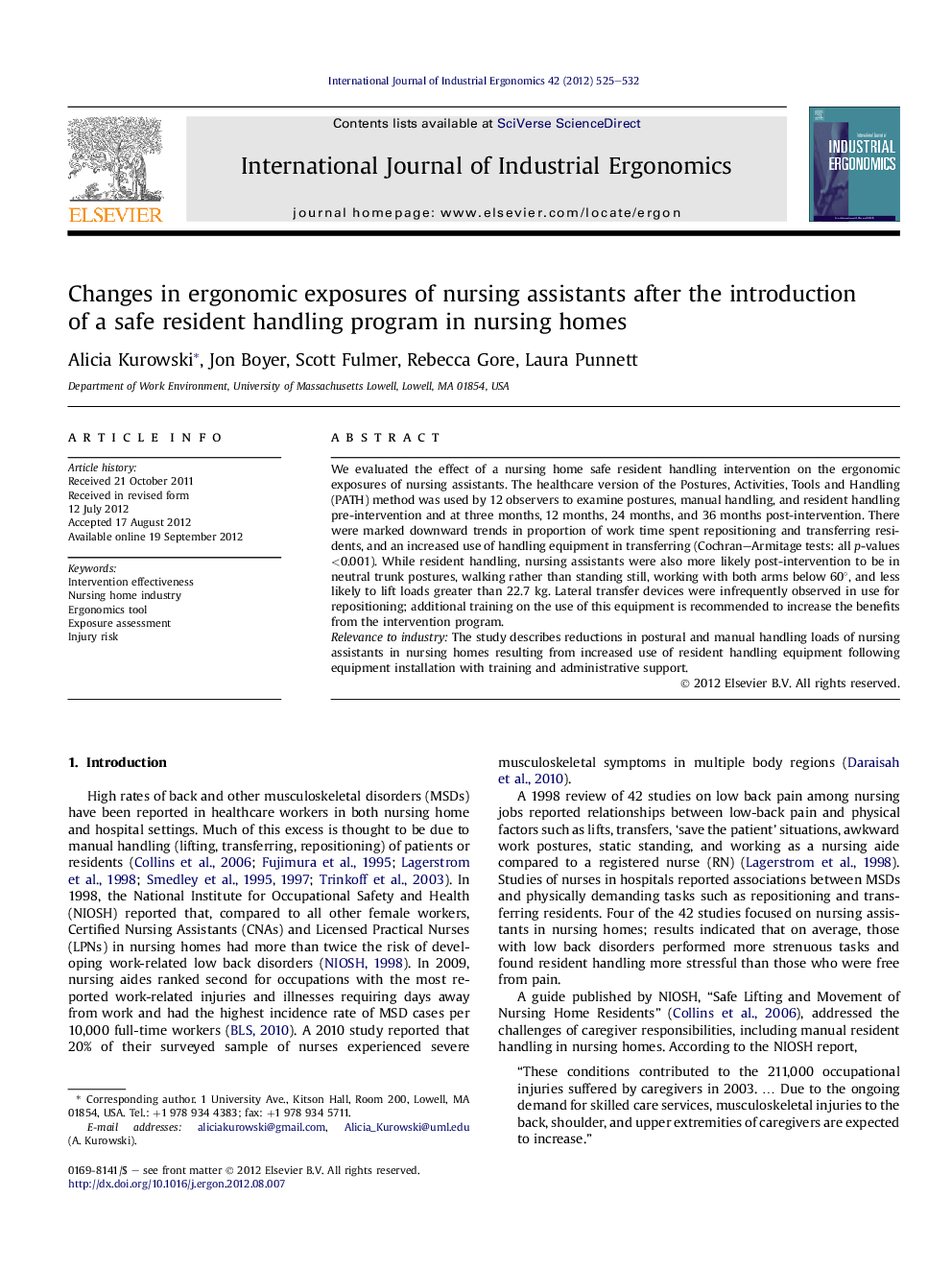| Article ID | Journal | Published Year | Pages | File Type |
|---|---|---|---|---|
| 1096128 | International Journal of Industrial Ergonomics | 2012 | 8 Pages |
We evaluated the effect of a nursing home safe resident handling intervention on the ergonomic exposures of nursing assistants. The healthcare version of the Postures, Activities, Tools and Handling (PATH) method was used by 12 observers to examine postures, manual handling, and resident handling pre-intervention and at three months, 12 months, 24 months, and 36 months post-intervention. There were marked downward trends in proportion of work time spent repositioning and transferring residents, and an increased use of handling equipment in transferring (Cochran–Armitage tests: all p-values <0.001). While resident handling, nursing assistants were also more likely post-intervention to be in neutral trunk postures, walking rather than standing still, working with both arms below 60°, and less likely to lift loads greater than 22.7 kg. Lateral transfer devices were infrequently observed in use for repositioning; additional training on the use of this equipment is recommended to increase the benefits from the intervention program.Relevance to industryThe study describes reductions in postural and manual handling loads of nursing assistants in nursing homes resulting from increased use of resident handling equipment following equipment installation with training and administrative support.
► This study reports on a safe resident handling program in nursing homes. ► We examined ergonomic exposures of nursing assistants pre- and post-intervention. ► Time spent handling residents decreased and equipment use increased over 36 months. ► When resident handling, nursing assistants worked in less severe body postures. ► Nursing assistants lifted lighter loads when resident handling post-intervention.
